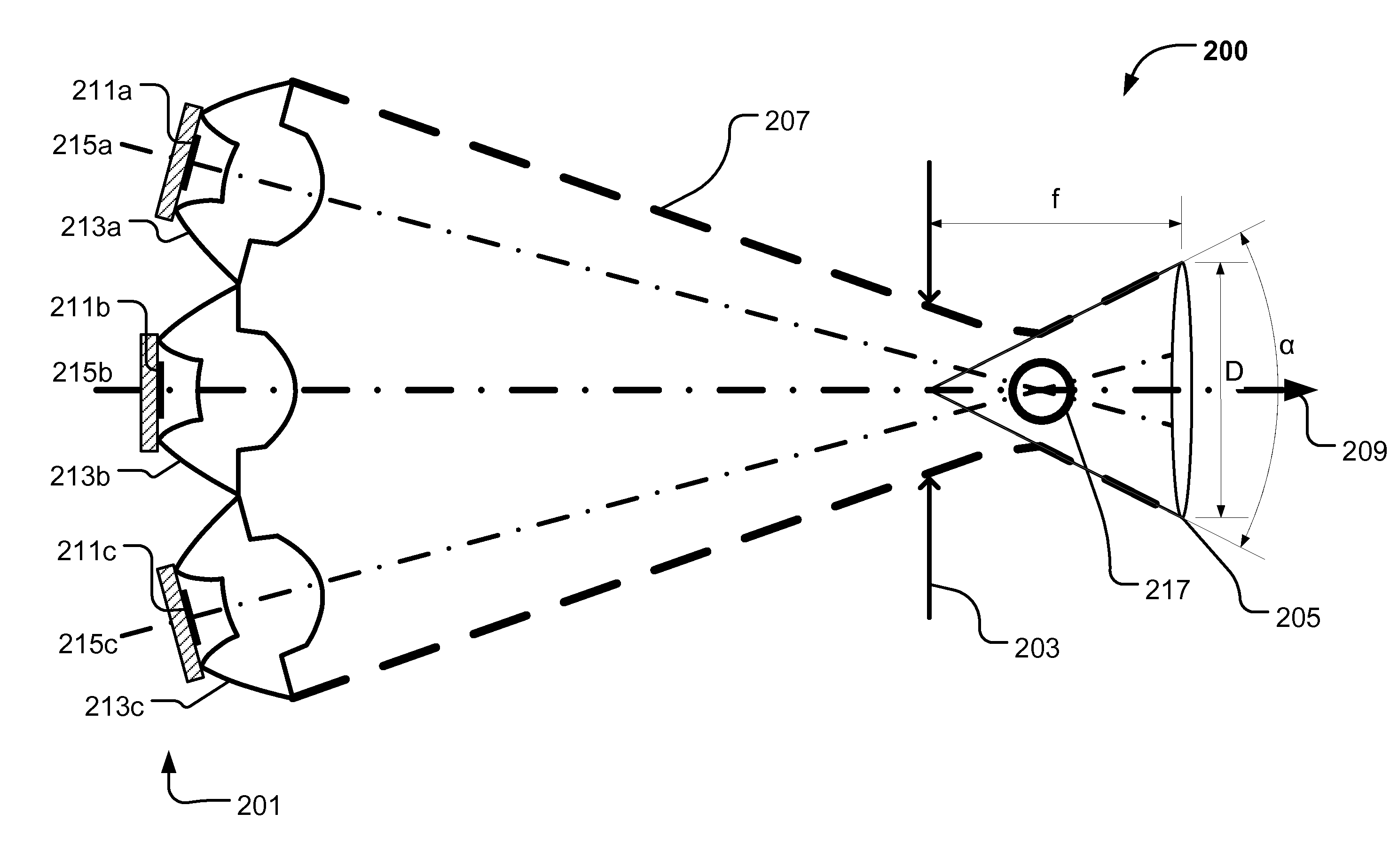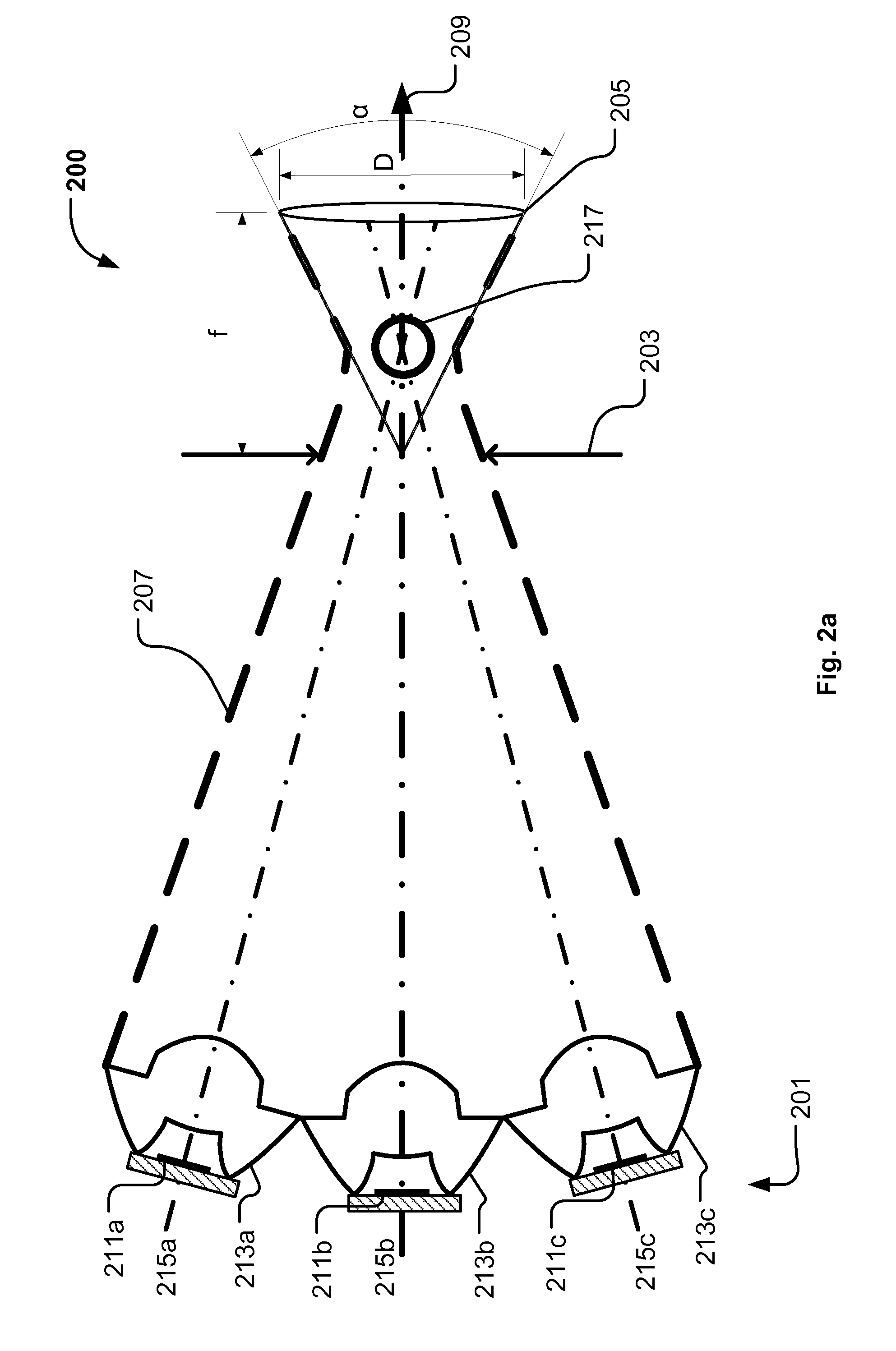Light Collector With Complementing Rotationally Asymmetric Central And Peripheral Lenses
a technology of central and peripheral lenses and light collectors, which is applied in the field of illumination devices, can solve the problems of inability to meet the requirements of efficient light emitting area, led projecting systems that have not yet been able to meet the requirements of light application systems, and the presently unsuccessful use of leds in connection with light application systems
- Summary
- Abstract
- Description
- Claims
- Application Information
AI Technical Summary
Benefits of technology
Problems solved by technology
Method used
Image
Examples
example
[0090]The color mixing of the illumination device of FIGS. 5a and 5b was be improved by using the light collector as illustrated in FIG. 10a-10f. In the following the light collector is referred to as a NRS TIR-lens (Non-rotational-symmetric TIR lens) The TIR lenses were thus modified to project a rounder spot and provide better color-mixing. However it was deemed impractical to simulate the entire illumination device of FIGS. 5a and 5b with 7 LEDs, 7 TIR-lenses and secondary optics, a process that would take up to several minutes per optimization step. Instead, a single NRS TIR-lens was optimized by data from a 25 mm {circle around ( )} gate, reducing each step to ≈6-9 seconds.
[0091]The NRS TIR-lens design was found by first optimizing a rotationally symmetric TIR-lens as illustrated in FIG. 8a for maximum luminous output in the optical gate of the illumination device of FIGS. 5a and 5b. However the skilled person realizes that any basic rotationally symmetric TIR-lens design known...
PUM
| Property | Measurement | Unit |
|---|---|---|
| areas | aaaaa | aaaaa |
| angle | aaaaa | aaaaa |
| height | aaaaa | aaaaa |
Abstract
Description
Claims
Application Information
 Login to View More
Login to View More - R&D
- Intellectual Property
- Life Sciences
- Materials
- Tech Scout
- Unparalleled Data Quality
- Higher Quality Content
- 60% Fewer Hallucinations
Browse by: Latest US Patents, China's latest patents, Technical Efficacy Thesaurus, Application Domain, Technology Topic, Popular Technical Reports.
© 2025 PatSnap. All rights reserved.Legal|Privacy policy|Modern Slavery Act Transparency Statement|Sitemap|About US| Contact US: help@patsnap.com



